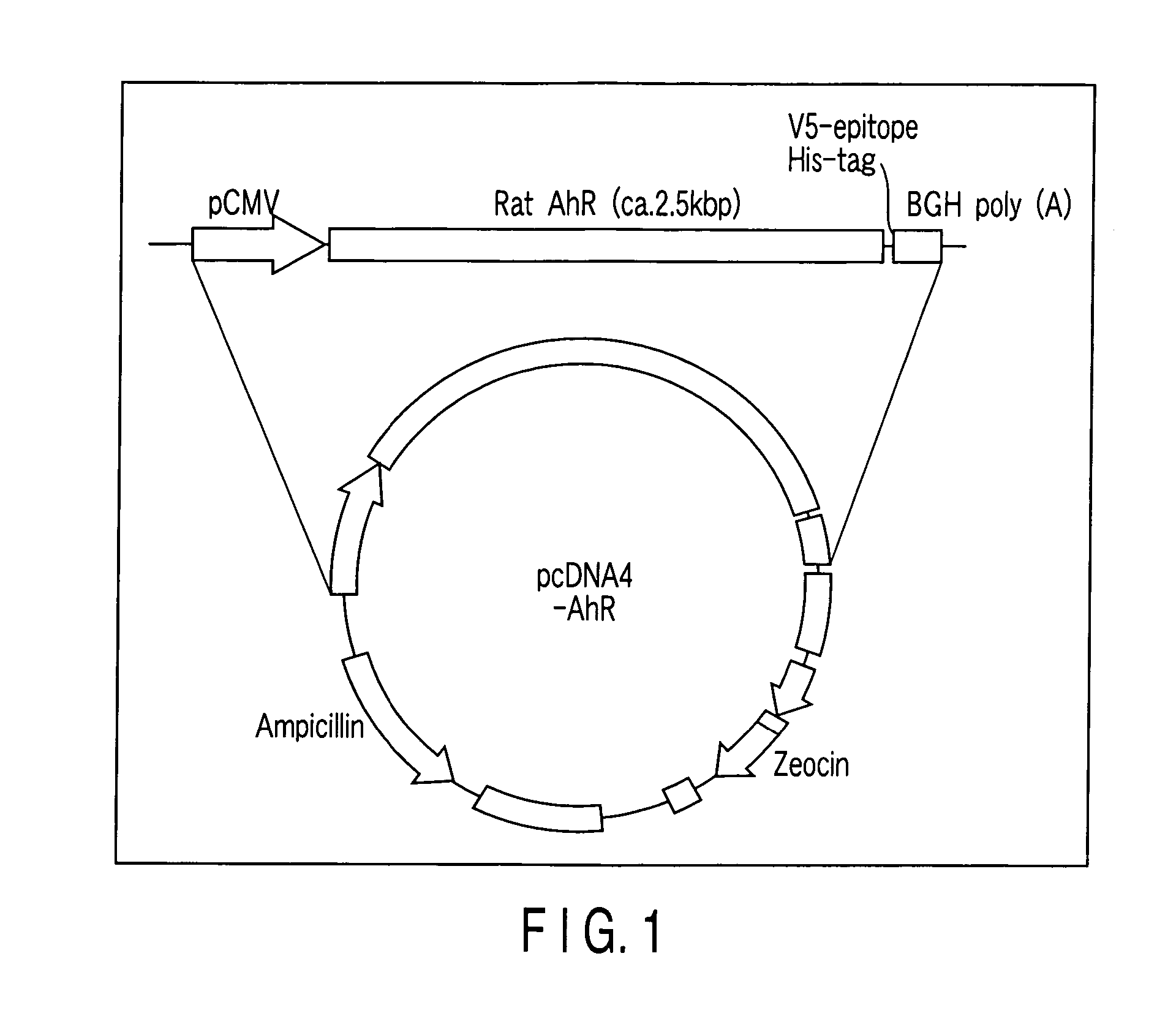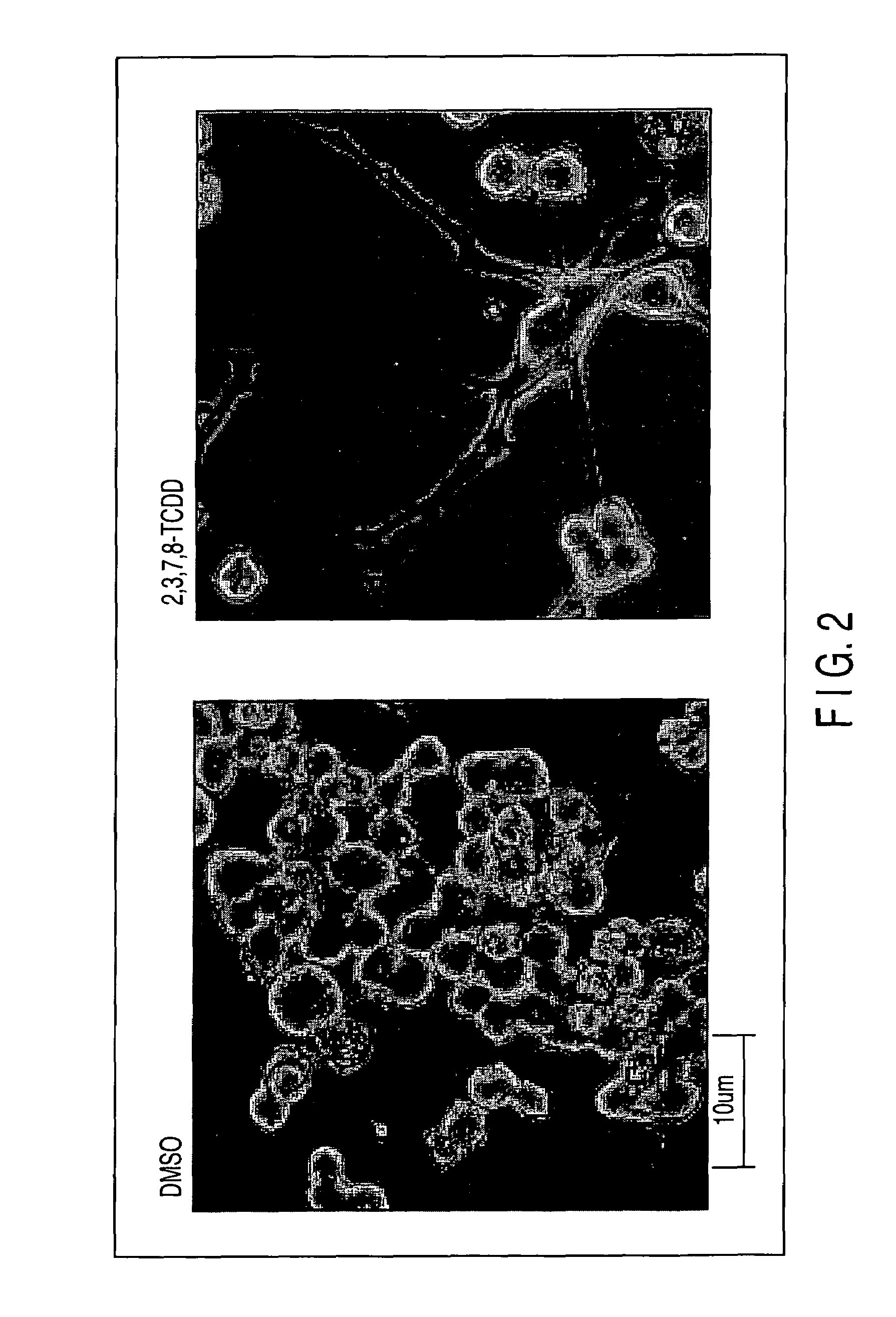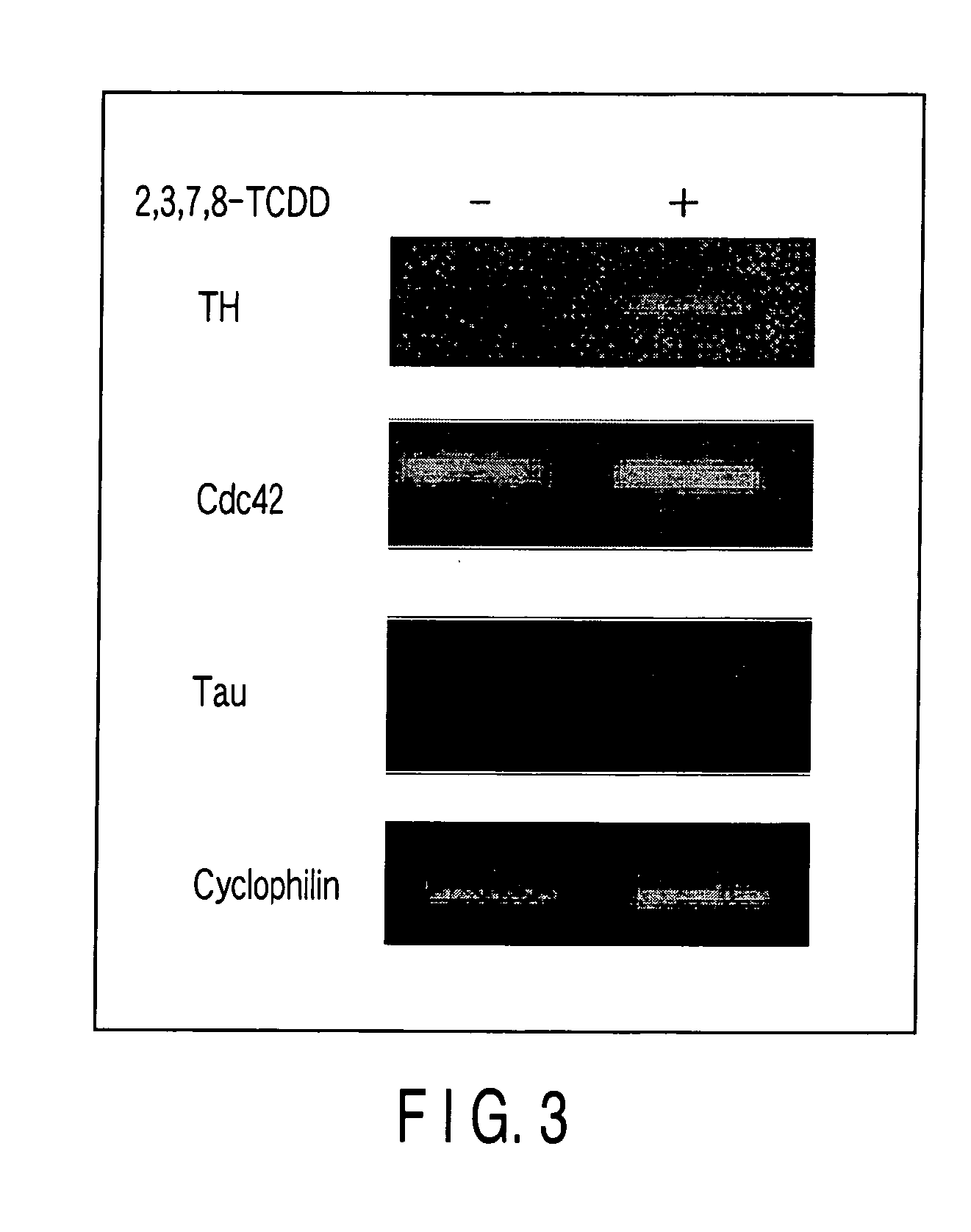Cells and methods for estimation of effects on neurological dysfunction
a cell and neurodeficiency technology, applied in the field of neuroblastoma cells, can solve the problems of difficult analysis of the effect of the aryl hydrocarbon receptor on the development of the nervous system, hardly ever identified specific genes based on the activation of transcription by the aryl hydrocarbon receptor in the nervous system, and no in vitro system using cells derived from undifferentiated neural cells
- Summary
- Abstract
- Description
- Claims
- Application Information
AI Technical Summary
Benefits of technology
Problems solved by technology
Method used
Image
Examples
example 1
Preparation of Aryl Hydrocarbon Receptor Gene
[0053]Total RNAs were extracted from the brain of a rat using RNeasy kit (manufactured by Qiagen K.K.). The extracted RNA was reverse-transcripted using an oligo(dT) primer. A coding region of the rat aryl hydrocarbon receptor gene was amplified by 25 cycles of PCR comprising a cycle with denaturation of 94° C. / 1 minute, annealing of 55° C. / 1 minute and extension of 72° C. / 4 minutes using Pyrobest DNA polymerase and the reverse-transcripted RNAs as templates. A forward primer 5′-CCCAAgCTTACCATGAgCAgCggCgCCAACATCA (SEQ ID NO: 1) and a reverse primer 5′-CCgCTCgAgAggAATCCgCTgggTgTgATATCAg (SEQ ID NO: 2) were used as primers. A HindIII restriction site was added at 5′-terminal of the forward primer, and a XhoI restriction site was added at 5′-terminal of the reverse primer. In addition, the reverse primer was designed so that the aryl hydrocarbon receptor protein is expressed as a fusion protein to which V5 epitope and hystidine tag are added...
example 2
Preparation of Receptor-expressing Nucleic Acid in Which Aryl Hydrocarbon Receptor Gene is Inserted
[0054]pcDNA4 / V5-His B (manufactured by Invitrogen Co.) was used for the expression nucleic acid. A multi-cloning site (MCS) is placed between the cytomegalovirus (CMV) promoter sequence and V5 epitope sequence in this pcDNA4 / V5-His B. A desired protein can be over-expressed under the regulation of the CMV promoter by integrating a sequence encoding a desired gene at an appropriate restriction enzyme site within MCS.
[0055]It is also possible to add the V5 epitope and hystidine tag at the C-terminal of the desired protein by appropriately modifying the 3′-terminal of the coding sequence of the gene to be inserted. The coding region of the rat aryl hydrocarbon receptor gene of the expression nucleic acid amplified in Example 1 is digested with restriction enzymes HindIII and XhoI. pcDNA4 / V5-His B was also digested with HindIII and XhoI. Then, expression nucleic acid pcDNA4-rAhR was prepar...
example 3
Preparation of Neuro2a Derived from the Neuroblastoma Into Which Aryl Hydrocarbon Receptor-expressing Nucleic Acid pcDNA4-rAhR is Transfected
[0057]Lipofectamin 2000 (manufactured by Invitrogen Co.) was used to transfect aryl hydrocarbon receptor-expressing nucleic acid pcDNA4-rAhR into Neuro2a. Neuro2a was sub-cultured to 80% confluence (2×105 cells) in a 24-well plate and then cultured in DF medium overnight. Mixed 50 μl of Opti-MEM medium (manufactured by Gibco Co.) with 2 μl of lipofectamin 2000, and the mixture incubated at room temperature for 15 minutes. The mixture was mixed with 50 μl of Opti-MEM medium containing 0.8 μg of receptor-expressing nucleic acid pcDNA4-rAhR prepared in Example 2. pcDNA4-rAhR was used after being digestion with MunI. A mixed solution of lipofectamin 2000 and receptor expressing nucleic acid was incubated at room temperature for 20 minutes, and was gently mixed by adding to Neuro2a that had been cultured in a 24-well plate. After culturing for 24 ho...
PUM
| Property | Measurement | Unit |
|---|---|---|
| concentration | aaaaa | aaaaa |
| deficit hyperactivity disorder | aaaaa | aaaaa |
| morphology | aaaaa | aaaaa |
Abstract
Description
Claims
Application Information
 Login to View More
Login to View More - R&D
- Intellectual Property
- Life Sciences
- Materials
- Tech Scout
- Unparalleled Data Quality
- Higher Quality Content
- 60% Fewer Hallucinations
Browse by: Latest US Patents, China's latest patents, Technical Efficacy Thesaurus, Application Domain, Technology Topic, Popular Technical Reports.
© 2025 PatSnap. All rights reserved.Legal|Privacy policy|Modern Slavery Act Transparency Statement|Sitemap|About US| Contact US: help@patsnap.com



